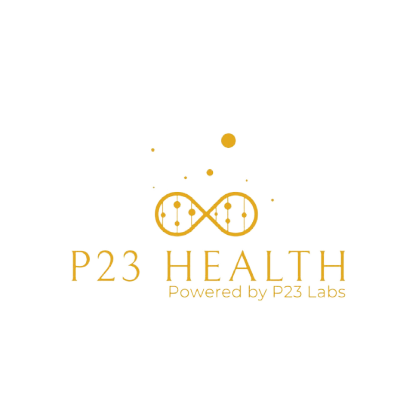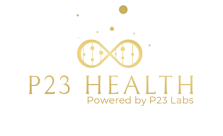
Unraveling the Secrets: Cancer and Genetics in Saliva-Based Testing with Dr. Paul Slowey (Demystifying DNA)
The Revolutionary Role of Saliva in Disease Detection
The episode with Dr. Paul Slowey unfolds a fascinating narrative about the potential of saliva as a diagnostic tool, challenging traditional methods and offering a glimpse into the future of personalized medicine. Dr. Slowey’s insights reveal how advancements in sensitive technologies have elevated saliva from a mere biological fluid to a critical component in detecting diseases with incredible accuracy. This segment of the blog will explore these technological advancements and their implications for healthcare, emphasizing the ease and non-invasiveness of Saliva – based testing compared to traditional blood tests or nasal swabs.
Spotlight on Dr. Paul Slowey
Dr. Paul Slowey’s career has been characterized by a relentless pursuit of innovation in the field of oral fluid diagnostics. With over three decades of experience, Dr. Slowey has significantly contributed to the development of saliva-based diagnostics through his leadership at Oasis Diagnostics. His work has paved the way for the creation of tests that can detect HIV, various pathogens, and potentially cancer markers through a simple saliva sample. This section will delve into Dr. Slowey’s journey, highlighting his achievements, publications, and patents that have shaped the current landscape of saliva diagnostics. It would also touch on his roles beyond Oasis Diagnostics, including his involvement with the North American Saliva Symposium and his position as an honorary visiting professor, underscoring his influence in both the commercial and academic spheres of saliva research.

Saliva-Based Testing: Beyond COVID-19
While the COVID-19 pandemic has brought significant attention to saliva-based testing, its applications extend far beyond detecting the virus. Dr. Slowey and Dr. Montgomery discuss the broader implications of saliva diagnostics in detecting other pathogens, and early cancer markers, and contributing to the fields of pharmacogenomics and personalized medicine. This section will explore these diverse applications, illustrating how saliva testing is proving to be a versatile tool in the fight against various illnesses and in tailoring treatments to individual genetic profiles.

The Future of Saliva Diagnostics
The podcast conversation paints an optimistic picture of the future, where saliva-based testing could become a mainstay in global health initiatives. This part of the blog would speculate on the potential global impact of saliva diagnostics, considering its role in increasing accessibility to screening tools, especially in areas where traditional methods are culturally taboo or logistically challenging. Additionally, it would consider the ongoing research into saliva’s role in detecting and managing not only cancer but also neurological diseases like Alzheimer’s and Parkinson’s, highlighting the vast potential of saliva in transforming health outcomes.

Conclusion
Dr. Tiffany Montgomery and Dr. Paul Slowey’s discussion in the “Demystifying DNA” podcast episode opens up a world of possibilities in the realm of genetics and diagnostics. By focusing on the innovative work of Dr. Slowey and the broader applications of saliva-based testing, this blog aims to underscore the significance of these advancements in shaping the future of healthcare. As research continues to progress, the promise of saliva in unlocking the secrets of our health and offering new pathways for disease prevention and treatment becomes increasingly evident, marking a new era in personalized medicine and diagnostics.

Q: What is Dr. Paul Slowey’s professional background?
A: Dr. Paul Slowey is the founder and CEO of Oasis Diagnostics, specializing in non-invasive saliva testing, and has over 32 years of experience in clinical diagnostics and pharmaceutical industries.
Q: What significant contributions has Dr. Slowey made in the field of saliva diagnostics?
A: Dr. Slowey has been instrumental in developing and commercializing several saliva-based products and technologies, including the ORQIC HIV test, the first over-the-counter HIV test in the US.
Q: What was the main focus of the podcast episode?
A: The episode focused on early disease detection through saliva-based testing, particularly exploring its role in early cancer detection and the potential for non-invasive diagnostics.
Q: Why is saliva considered a revolutionary tool for disease detection, according to Dr. Slowey?
A: Saliva is seen as revolutionary due to the advancement in sensitive technologies that can detect biomarkers in smaller quantities, making it a viable option for non-invasive diagnostics.
Q: How does saliva-based testing compare to traditional nasal swabs or blood samples in terms of sensitivity and accuracy?
A: Dr. Slowey mentioned that saliva-based testing has become more sensitive and in some cases has edged in front of nasal swab tests in terms of detecting certain pathogens.
Q: Can saliva-based testing be used for detecting diseases other than COVID-19?
A: Yes, saliva testing is effective against other pathogens and in the early detection of cancers, among other applications.
Q: What are some potential global benefits of saliva-based testing mentioned by Dr. Slowey?
A: Saliva-based testing offers a non-invasive, culturally acceptable, and easily transportable method that could increase access to screening tools globally, especially in areas where traditional blood tests may be taboo or less accessible.
Q: How does saliva-based testing contribute to the field of personalized medicine and cancer screening?
A: It offers a non-invasive alternative that can identify molecular characteristics and responses of cancer cells to different therapies, enabling tailored treatment plans and optimizing efficacy and safety.
Q: What future applications of saliva-based testing excite Dr. Slowey the most?
A: Dr. Slowey is excited about saliva’s role in early cancer detection, its potential in pharmacogenomics, and its application in diagnosing and managing diseases like Alzheimer’s and Parkinson’s through the detection of specific biomarkers









